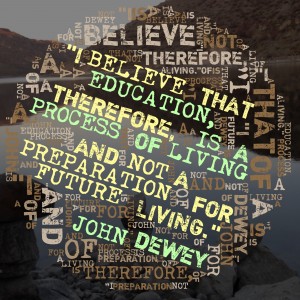Social Media and Ed Tech: Reflection on Professional Learning
1 What did your professional learning look like 6 years ago, and how has it changed?
Six Years ago, I was still a lurker on Twitter, but was a Saturday participant in Classroom Live 2.0. Now I share and connect on Twitter, Google Plus, and Nings.
Now I’m participating in and supporting MOOCs [etmooc and clmooc ] to connect, share, converse, and collaborate on learning issues.
My Twitter friend Denise Krebs and I planned a beginner’s presentation online through twitter and google docs to present at Connected Educator Month 2012. We started a teacher Flickr group and we have met in person!
I’ve vlogged with colleagues through Ben Wilkoff’s Fellowship of the Open Spokes, something that is still scary to me.
Middle School teachers from clmooc are creating spaces [google, MightyBell, blogs ] to collaborate as teachers and with our students.
I’ve joined the conversation online, and am trying to bring our staff online. Yet, as Vicki Davis suggests, Title One schools are focused on drilling kids to learn, and in the process are enlarging the digital divide. Fortunately, we are moving forward in that area, to use the tools students will use in their futures, such as collaborative tools. Therefore, we are a Google Apps for Education school. Our new principal understands that tech tools provide access to learning for many kids.
2 What are the best resources you have found? How have they impacted your teaching and learning?
The number one game changer for reading and writing and feedback is Google Apps for Education. It is an ecosystem of tools that engages students in searching, creating, revising, and collaborating on topics. I’ve written about that ecosystem here. It’s a game-changer for my students and myself. As mentioned, I’ve planned many collaborations through Google Docs.
Edmodo and Kidblogs provide forums for sharing and conversation. Bitstrips and Voki classroom have helped students express the synthesis of their learning. I’ve blogged about using the tools to read and write to learn Common Core State Standards as a guest blogger; the focus is not the tools, but the goal.
GooruLearning is a platform that allows teachers and students to research and collect resources through our Google Apps for Education. Search, research, and teamwork are all things we are beginning to do.
Of course, Twitter is my goto place for learning and sharing — I’ve found most of my tools, webinars, connections through the amazing people in my PLN and I cannot thank them enough! And, I’ve reciprocated with help to those asking.
3 What gaps or challenges do you feel exist between your current learning environment and your aspirational learning environment?
As mentioned, search, research, and teamwork are all things we are beginning to do in my classroom. I’ve taken and reviewed Dan Russell’s Google Search and shared that information at Rotary. We are learning these strategies in the classroom, adding more each year. My students know to cite sources and to use Creative Commons, but we need to dig deeper and be the explorers and collaborators for real issues of interest to students. That’s why I’ve started [late] to participate in the #teachdonow course as much as I can now that clmooc is winding down. As it says on my blog: “Students today enjoy the connectedness of social networking; it is part of their very being. My goal is to bring my instruction into that cloud to teach the content required in ways that inspire online responsibility and ethics in this new, very public world.”
4 What is your preferred learning style? How do you adapt your learning style to networked learning?
I prefer to learn by observing and then trying. I like encouraging feedback. Because I am a shy person outside of my classroom, the network has been so beneficial — just tweet and respond. I can do that. Google Plus? Just post and search and comment; join communities. Discuss alternatives or differences. It’s much more involved and deeper than just studying from a book or sitting through a training. Google Apps for Education, Edmodo, and blogging have brought this positive learning environment to my students. Wowser!
5 Why do I connect with others? I want to help my students to connect to the global network as positive, problem-solving citizens.
Thanks to Michael Wesch and Mindshift for explaining why this is important….
How about you? I want to do something. [ and did ] I want my students to know they can do something.


